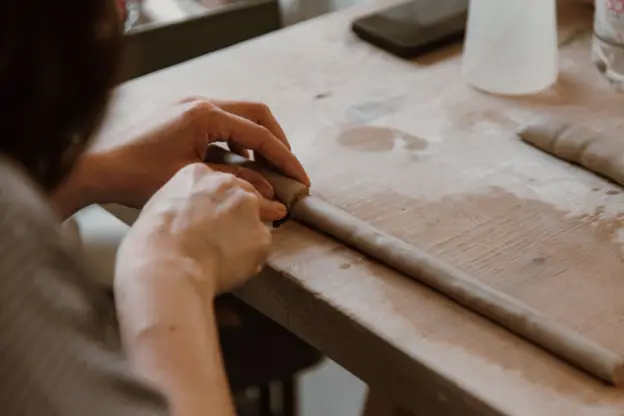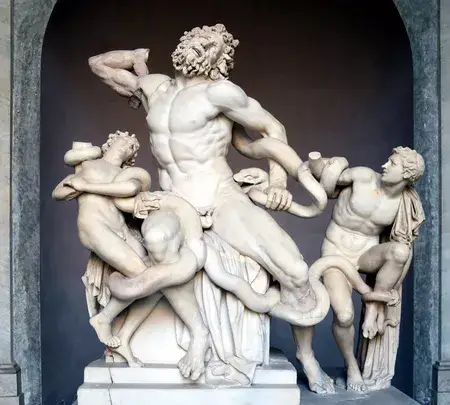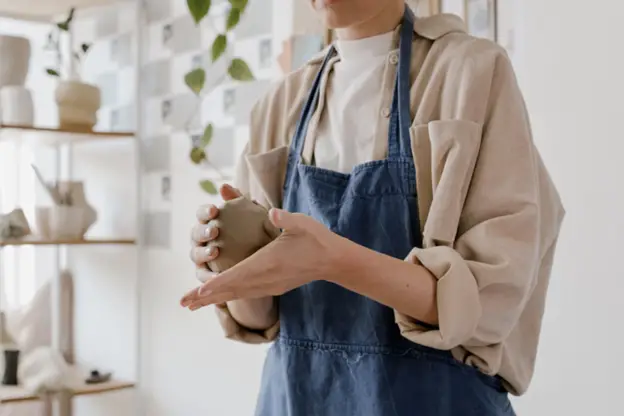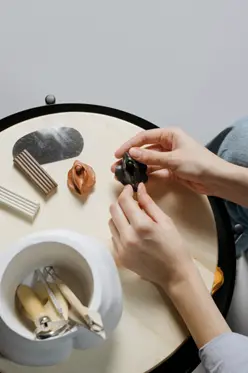|
Getting your Trinity Audio player ready...
|
Working with our hands is a therapeutic exercise. Add clay and a love of figurines to that mix – and you are set to becoming a sculptor. In this article we look at some of the most common sculpting mistakes beginners make and how to fix them.
Image Source
But as with most things, it often looks easier than it actually is. That’s ok – no need to pack your sculpting bags and race back to crosswords just yet. In art, mistakes happen and are often encouraged. Knowing how to avoid the most common sculpting mistakes that will lead to a crack or complete dud – is where the magic lies.
The key is to identify mistakes and pre-empt the next layer in the process as you build. So, we look at a range of issues. From the perfect workspace to poses, anatomy, proportions, tools and trusting your instincts – here are the most common sculpting mistakes to look out for as a beginner.
Top 10 Sculpting Mistakes and Their Fixes

Art has no rules in some categories. But with sculpting, and whatever your goal – there are some things that need to be considered. If you intend to turn sculpting on its head and make avant-garde contemporary pieces to showcase your artistry – go right ahead.
If you want to follow the more traditional route and stick to the classics of figuration, here are the most common sculpting mistakes to keep an eye on.
Work Space

To create, find a space where you can calm your mind and focus on the task at hand. Sculpting requires a fair number of tools and an organised approach. It can be a meticulous task. So, to keep your results as aesthetically pleasing as possible, a neat workspace will count in your favour.
Working your way up the ladder of your sculpting career or hobby will eventually lead to casting your work. Therefore, your clay should not be ladened with little bits and pieces of your everyday studio grind. Overall, a neat and comfortable desk will keep distractions at bay and help creativity.
Make sure your table height and chair are suitable for your needs. As a beginner, you will quickly learn that sculpting takes time. And to keep the hours productive, a good healthy posture will have you sculpting with ease.
How to Fix
Every artist is different, and as beginner sculptors, we understand avoiding extra expenses is important. So, it is best to experiment with your art space. See what works for you – whether it is a standing desk or a more comfortable chair.
The Pose

Wanting to get into the thick of it before considering a proper pose is one of the most common sculpting mistakes. We get it – you want to get your hands dirty – take a step back and think of what you want to achieve. Ask yourself, is it interesting enough?
Think about it for a second. As an artist, we want to capture the eye of the viewer, and how else would you do this? Yes, technique and colour will add to the equation, but ultimately it is the pose that will first draw attention.
A dull pose, even if the details are on point, can weaken a sculpture. But consider the idea of a pose from more than just the ‘bland’ angle. Symmetrical poses are often much less interesting than one thinks. The pose you settle on is where the creative freedom starts.
How to Fix
In theatre, they teach students to observe others. This helps them give life to the characters they need to embody. The same goes for beginner sculptors. Therefore, to avoid one of the most common sculpting mistakes, start looking around and gather the details. Document various poses you think are notable and worth replicating in your practice.
Good Reference Points
One or two references for what you intend to sculpt are not enough. Sculpting complex models – accurately – will require various angles to bring the vision to life. It is your starting point before touching the material.
References do not stop at photos of intriguing poses. They also include models, books on human anatomy, and sometimes collected items – whether valuable or not. Something you picked up could add the inspiration behind the texture your sculpture needed to pop visually. Losing touch with your reference and the detail tends to reveal the inconsistencies of your amateur hands.
How to Fix
Start collecting whatever your eye appreciates. From magazine clippings to little sketches you have doodled – all these elements will become valuable to finding your voice as a maker. A disciplined approach to creating the sculpture that you want is one of the most common sculpting mistakes to avoid.
Sticking to an Angle
One of the most common sculpting mistakes includes working from a single angle. Sculpting is a 3D experience, so, consider the 360 degree view.
Sometimes, it asks you to experiment – embrace it. Work with a mirror nearby to see what your body and muscles do in a certain position or shape. Capture photos of yourself or your friends and stick them in your working view at your desk and reference back to them – often.
How to Fix
A rotating disk makes it easier to get an overall idea of what you are shaping as you go along. It helps you visualise and check the model regularly against what you are viewing on your reference material.
Remember to create distance between you and the work now and again. As sculpting takes hours of up-close actions and movements, stepping back to gain perspective helps to see which angle needs attention.
Measurements
No two sides are the same – and our brain also perceives it like this. Jumping into it before the proper consideration of your measurements, is the easiest mistake to make in sculpting.
A good step to include in your practice is to start by shaping the general shapes. It will help with the anatomy and proportions of your model. These are some of the other most common sculpting mistakes made in the beginning stages of sculpting.
How to Fix

An easy solution to this little issue is to focus on the model’s outline. When the base for your figurine takes good form, you’re less likely to get the wrong depth measurements. Another tip is to focus on the primary shapes like boxes, cylinders, and spheres. It will help you create an accurate outline of the model.
The Right Proportions
Although we are confronted with images of humans in all shapes and sizes day in and out – all beginners struggle with getting the proportions right.
Unless an oversized head is what you are going for, it is necessary to understand the human anatomy and form to create pieces that are either accurate or deliberately unconventional.
The right proportions from the start of the process will illuminate mistakes and other frustrations as you build your figurine.
How to Fix
Sticking to the correct proportions is simple. Depending on the size of your model against the reference image, within scale, you will be able to tell how far the eyes need to be apart from one another, or how long the legs against the arms should be. You could easily draw measurable lines onto these references or photos as you sculpt.
Finding a balance
Not all sculptors are able to stand on their own two feet. But what is necessary is for your clay not to outweigh one side of the sculptor – leaving you with a lopsided final product.
This is a detail that most artists overlook and one of the most common sculpting mistakes among young artists. It makes sense as it takes experience to get to know the feeling of the clay and how to layer your build.
How to Fix
Roll out your clay before you start. Every artist’s technique differs, but handling the clay, either in long strips or rolling it in your hands before applying, will ensure that you keep your figurine even throughout.
Letting Go of an Armature Template
Every object around you has a foundation, and so should your figurine. Kicking off with a well-proportioned armature is almost the best start you can give yourself. It is the basics. And if you get this right, the rest will be history.
But not all bodies are the same. And to avoid creating the same shape repeatedly, using a template is a must.
How to Fix
Find the outline for a body shape you have in mind and print it out. These templates are relatively easy to find and will give you confidence in your form from the get-go. These silhouettes will guide you in the right direction and make sure your sizes are realistic.
Anatomy

Somehow we do not know our bodies well enough. Without a clear concept of the model’s anatomy, designing the proper structure and details can be very difficult. But the most common mistake sculptors make when talking about anatomy is jumping into the noticeable details too quickly.
The details are where the fun is – but anatomy should be approached in layers – much like our own muscles.
How to Fix
Block your primary shapes first, and after adding them to your armature, start layering the different groups – layer by layer. Work from the inside out, and only when you have a good overall shape – focus on the smaller muscle groups that give the piece its definition.
Tough Areas
Very few artists can draw hands and feet well. So, don’t be put off sculpting if you struggle to finesse these areas. Rather than avoid them, make them a focus area to show your dedication and artist credibility over time. Hands and feet are tough, but with experience, you can achieve a lot.
And the same basic rules apply to shaping hands and feet. It starts with a good armature and then a sectioned method.
How to Fix

The more detail your armature has, the easier it will be for your final product to take shape. But not everyone can afford armatures that have individual fingers and toes. With hands and feet, the best way to achieve a close to realistic result is to view your hand in its different segments.
You have the palm, one overall shape as your building block, and then your fingers, which can be segmented into three proportioned pieces. Add some muscle layers, then shape, and finally detail.
Bottom Line
Mistakes happen, and as a beginner sculptor, it is best to start getting used to this idea. Yes – although we don’t always like them – the most common sculpting mistakes will help you understand the fundamentals of working with clay and modelling realistic figurines. And as a sculptor, you will soon learn that these mistakes and their fixes had a pivotal impact on your progress and love of creating.

